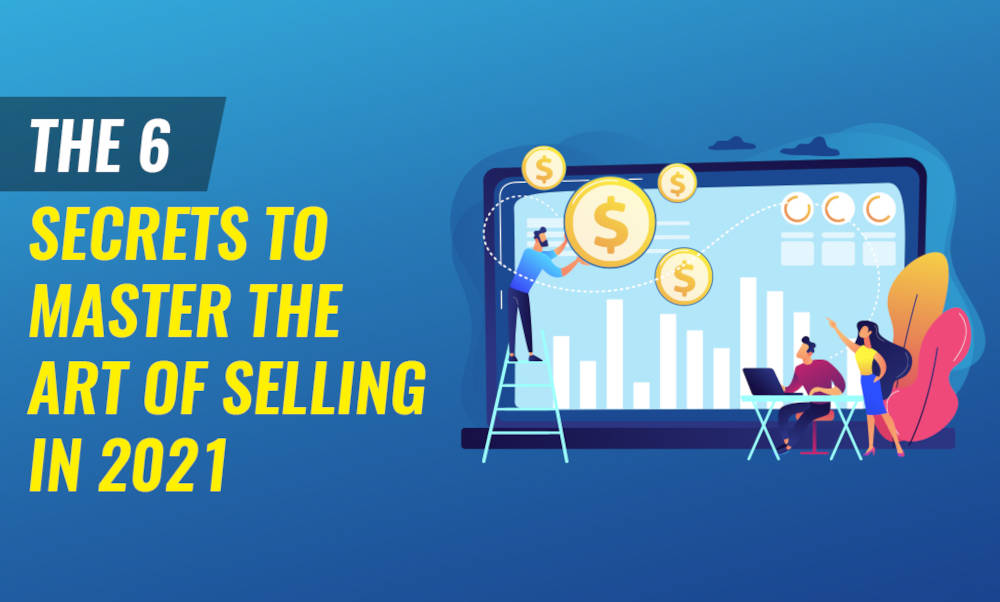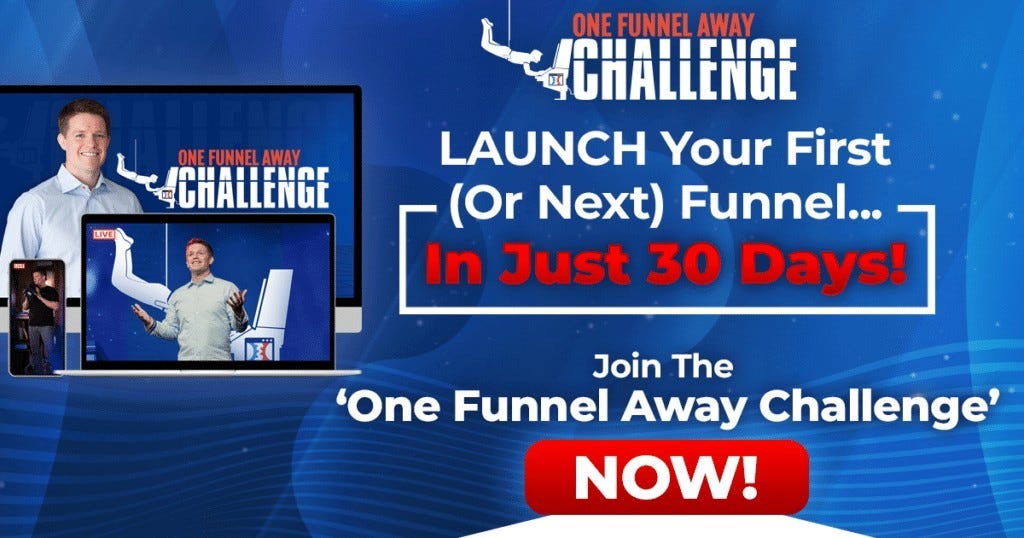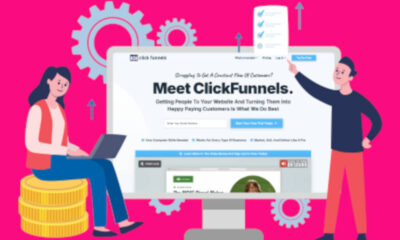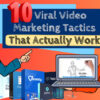Guides
The 6 Secrets To Master The Art Of Selling In 2021
If you’re trying to generate higher-quality leads, enhance your digital advertising, and boost your earnings in 2021, our step-by-step guide will show you the proven steps you need to take.
Sales is not a science. It’s part data, with equal parts art and relationships. Most importantly, it’s about knowing where your potential customer is in their purchase-making decision.
This post will discuss how to boost your sales in 2021 without being pushy and establishing long-term brand loyalty.
There are 6 ways to master the art of selling, and we describe those ways below:
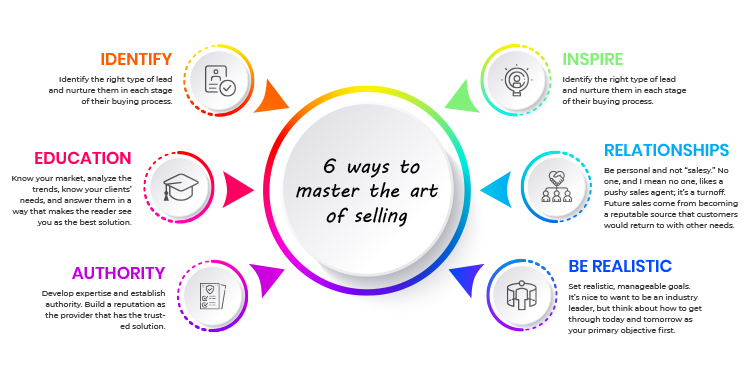
- Identify: Identify the right type of lead and nurture them in every stage of their buying process.
- Education: Analyze the market, know trends, know your clients’ needs, and answer them in a way that makes the reader see you as the best solution.
- Authority: Build expertise and establish authority. Build a reputation as the supplier that has the trusted solution.
- Inspire: Speak with confidence and become a pioneer.
- Relationships: Be private and not”sales.” No one, and I mean no one, likes a pushy sales agent; it’s a turnoff. Future sales come from becoming a respectable source that customers would return to with other needs.
- Be Realistic: Set realistic, manageable targets. It’s wonderful to want to be a business leader, but consider how to get through today and tomorrow as your primary objective first.
Now that you have a clear picture of the steps required to boost your sales output, you need to understand the sales process and what point a potential customer is in about making a purchase.
Identify the right kind Of Leads And Nurture Them
We classify prospects as leads, and there are three kinds of leads; cold, hot, and hot.
A cold lead is somebody who lacks knowledge about your services or products and is probably not in the marketplace at the time to produce a purchase.
Meanwhile, a hot lead is someone ready and willing to make a purchase.
Hot leads are those prospective customers that are already aware of your brand and are looking to purchase your goods and service or something similar.
A warm lead is a person aware of your brand but might take a while to prepare to make a buying decision.
The cold lead is somebody that has just started to consider your product but is oblivious of your brand.
The aim is to find hot leads and move the warm leads from being on the fence to be much closer to action.
Four Different Buyer Types
For example, if you run a classic brick-and-mortar furniture store, you can not assume that each and every person that walks through your doorway is going to make a purchase.
Why is this?
Let us examine four types of shoppers, all at various stages of the purchasing process. Let us name those four types as Gary, a first-time buyer, Susan, thinking about buying, Henry looking to kill time, and the Roth’s, that are prepared to act.
Gary, The First Time Shopper
This introductory phase is the start of the purchasing process. These types of leads are often first-time contacts with you and your product. At this stage of the buying process, you may expect less than 5 percent conversions. It is not impossible, but it’s not the greatest chance of making a sale.
Susan, Thinking About Buying
The next type of person might be in the market to buy a new sofa, dining table, or chair and aren’t 100% ready to generate a purchase. This is the early-to-middle buy stage, and for Susan, it is the point where she is starting to seriously consider a purchase but is hoping to get more information before acting.
Like many buyers at this stage, Susan is prepared to move quickly toward a purchase decision but might need some inspiration or time to nurture their choice.
Henry, Killing Time
Henry may be browsing while waiting for meals at the takeout next door or surfing while his wife shops elsewhere. He’s just killing time and not serious about a purchase at all. For browsers at this point, a purchase isn’t a reality, but they might be in the market later on. It’s vital to grab their information for that opportunity, and you should treat this buyer the same as you would with a cold lead.
The Roth’s, Shopping For A Deal
For the Roths, they have been looking for a new couch for months and have opted to buy one.
These are the highest-quality kind leads and are those that you want to concentrate your attention on the most.
How you get them to act is part messaging and part of previous sales experience.
Understanding where a potential customer might be in the purchase decision can help you market to them effectively. The goal is to empower their decision by educating and motivating them without coming across as pushy.
Once you understand where your prospective customer is within their purchasing decision, utilizing our top-selling techniques listed below will help you move a possible sale to closure.
Education: Know Your Product and Market
To be more effective with your sales strategy, you want a good grasp of the fundamentals. In sports, fundamentals are the building blocks toward success, such as learning how to handle a ball, the proper stance to throw or catch, and much more.
In sales, the principles change all of the time depending on the marketplace, the trends, and the business environment you’re operating in.
Take the time to study what is useful in your market, the current trends, and what experts predict for the future. As you analyze what is working in the current market, understand how you fit in that area and what you can do to distinguish yourself and your product from others.
By way of example, imagine you’re selling a digital product that helps recent retirees with their financials and how to be sure they have sufficient for their own future.
If you don’t grasp the market for what is effective strategies and do not know what’s selling or how your product stands out, it can be a substantial problem.
This strategy can provide misleading information as you examine results, particularly if you are wildly off-target in your product launch, costing you hours, labor, and other expenses.
A better strategy might be the Ready, Fire, Aim, Reload strategy first discussed by Michael Masterson and detailed by Brian Clark of Copyblogger fame in an article of the same title.
The strategy is simple.
- Prepare a product
- Launch it
- locate the audience
- Re-launch it after making minor alterations
Too frequently, before a product launch, we try to anticipate every nuance of the market for our product and then set out to make it as perfect as possible.
Rather, a better notion is building a product, launching it, editing it, and iterating a newer version that matches consumer needs before relaunching it.
By analyzing how your competitors and industry leaders are doing things efficiently and then launching an earlier”Beta” version of your product, you will gain invaluable insights. And understanding this data helps you cater to your potential consumers’ specific desires.
Develop Yourself As An Authority
But how do you set your authority?
Being an authority does not mean that you have every answer.
You only have to know more than your prospects and have the solution they need at that time.
This process will create the perception of your authority and experience.
To establish your authority, among the best tactics is to speak and write in a confident voice about issues your prospect may face and the way you’ve got a solution to that problem.
Again, you don’t need every answer that might be asked but speak in a way that conveys to your prospect that you will discover it soon even though you do not have the answer at the moment.
Sometimes referred to as the”fake it til you make it” strategy, this procedure is all about solving a problem or immediately offering a solution.
Understanding your insights and answers is more than the casual prospect may know about a given topic. How you communicate your expertise goes a long way to how they will perceive you as well as the solutions you provide.
Be An Authority In Your Messaging
We touched on this a little in the previous section, but how you speak and write conveys a message. To be seen as an authority, you should be directly on your solutions and use short, clear statements.
There’s confidence in brevity.
Composing many words to say,”x, y, z,” does not convey confidence.
Of course, the more you know about the marketplace, the problems your prospects may be experiencing, and how your product will help them, the more confident you encounter.
This confidence builds your authority with the prospects, building confidence, which is vital in any sales process.
Direction is an exceptional illustration of authority in action.
Effective leadership produces a strategy, implements tools and mechanisms for everyone’s success, and is an outstanding listener to get insights into what is and isn’t working.
Getting an authority and using that ability in your message is extremely similar.
How you receive information and formulate a plan to communicate that in a way that is easy and concise is the sign of great leadership and creates a sense of authority by default.
Be Personal, Not”Earnings”
Sales too often focus on the outcome, i.e., the sale rather than the prospect.
Sales should be approached as a connection rather than a transaction.
Diagnose the issue And Treat The Disease
In sales, the better you establish trust in your products and services, the more appealing your offers become. The goal is to become a trusted resource for your clients and your offerings in solving their problems.
A good analogy of this sort of relationship is the doctor/patient relationship.
Among many roles the physician chooses, the most overlooked one is as a point of contact in their institution’s earnings process.
In this instance, the doctor provides customer service to the individual, and that’s the sale the physician makes for your institution.
Obviously, the doctor’s priority is the patient’s health, yet the relationship and rapport a doctor has with a patient is part of their medical care provider’s long-term business.
This relationship of trust encourages the patient to seek out future ideas and guidance, increasing”sales.”
The purpose is to be personal and establish a connection with the customer rather than being transactional.
Fundamentally, a transaction occurs between two parties and is the result of the arrangements and nothing more.
A relationship built on trust, like a physician and patient, is when the right solution is offered for the particular problem in such a manner that there is not any uncertainty.
You Are The Bus Driver, Not A Passenger
Another way to create a relationship business is to understand your process in their purchasing phase.
Your role is to earn the product, promote it, and send it when the time is appropriate.
At no time are you choosing for the customer what they need?
You are merely providing the vehicle for that thing they are looking for and want.
In other words, you are providing the mechanism for your potential to allow themselves to act on what they want to do.
You’re the guide helping them on the revenue journey, a bus driver assisting the passenger in getting to their destination.
You are allowing the client to say,”yes.”
The reality is that boosting your sales demands more attention toward building relationships and establishing trust, but do not take that relationship too far.
You need to understand that you are more bus driver in relation to the passenger, and your role is to get the passengers to where they would like to go.
Establish Realistic Goals

It’s easy to set a lofty goal, think about the results, and dream of success.
Too often, goals are set and gradually, over time, missing or lost.
We see this happening in our personal lives all the time.
In reality, over 80% of settlements fail. Why is that?
The reason our intentions fail is they are too broad. We lack the metrics necessary to make them don’t have a support system in place.
Let’s examine what this means in greater detail.
By being challenging to conceive the aim in the broadest terms, we can’t establish that objective procedure.
Quite simply, we fail since the measures to achieve the goal are not made apparent, and there might be too many things essential to get to your objective.
In behavioral psychology, the research shows that making lasting change in your behavior begins with establishing small achievable objectives, making the behavior” fun,” and developing a support and accountability system.
So how can this research boost your sales?
It shows the importance of setting realistic goals to help keep us motivated. Some think of this as lowering the bar, but you want to think about it differently.
A marathon in and of itself is a daunting task. But with appropriate training and preparation and a strategy that focuses on the incremental”measures” to get from beginning to end, the marathon’s overwhelming task becomes more manageable.
Our motivation ebbs and flows, so having a plan to take on small achievable using a support system helps maintain motivation toward our targets.
Focusing on every step and stage of the run is a good strategy. Rather than the total distance is a great way to take on the arduous task of running a marathon.
The Strategy In Action
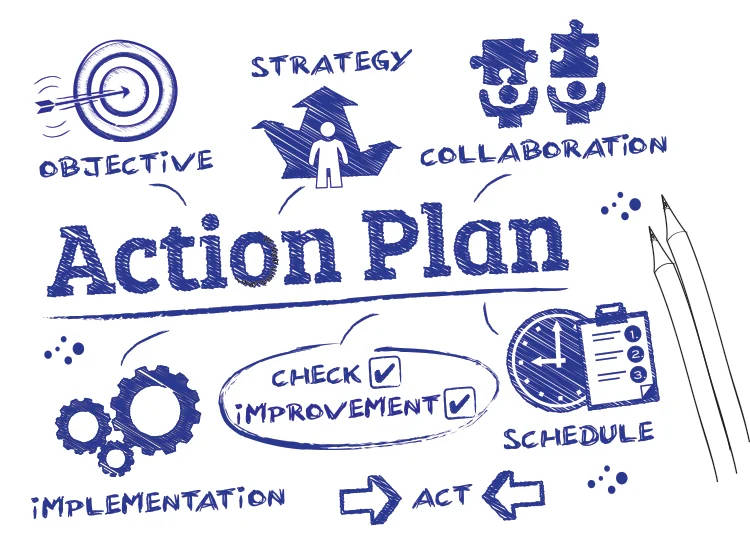
Creating lasting behaviors is a step-by-step action strategy based on a realistic target objective, boosted by a support system to maintain motivation, and locating a perspective that makes the process “fun.” .
This procedure is the basis for mastering the art of selling.
Taking the time to identify the right kind of prospect and where they could be on the buying journey is the first step toward increasing your earnings.
Understanding the market, the trends, and what is the very best way is the next step.
Establishing yourself as a trusted authority that can solve the most pressing problems and one that inspires action is a great way to enhance your bottom line.
Remember, people want to be treated with respect and as a person, not an outcome, so deal with each sale as a person and not a trade.
Ultimately, set realistic goals and make the systems that can enable you to achieve smaller goals and make them scaleable for each success.
Sometimes the link is with the product, but often it is with the person who made the sale that matters more.
Remember that treating every prospect with respect and being genuine will help you build positive customer relationships to provide you with the best chance for future business.
>>>Join The One Funnel Away Challenge<<<


